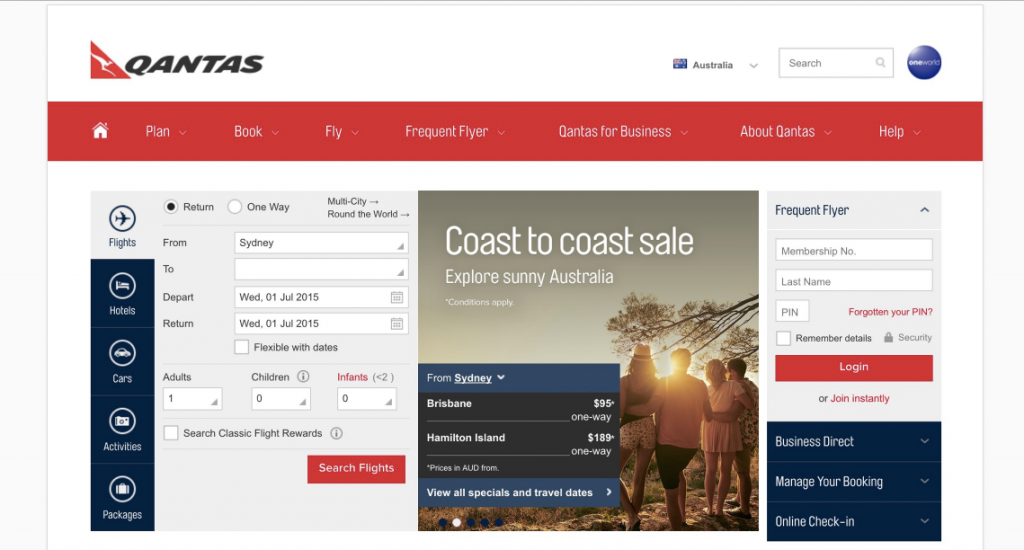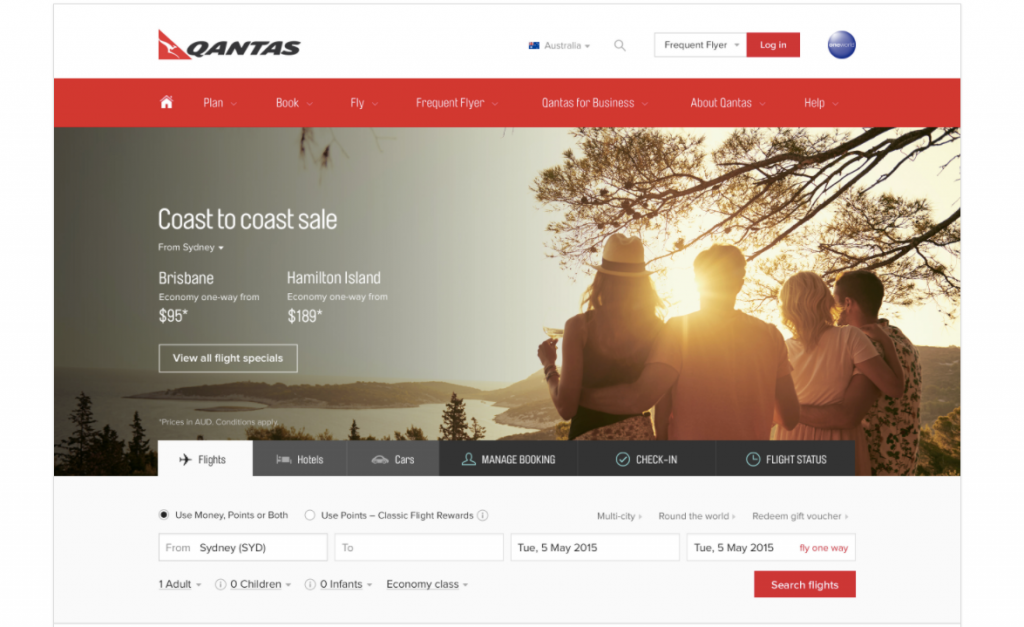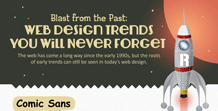The Top 10 UX Designers You Need to Know
User experience (UX) is a term you’ll hear tossed around often in discussions about web design. Much to the chagrin of UX experts though, the term itself isn’t always correctly used or understood. The same goes for user interface (UI) design, which is commonly confused with UX design.
To clarify, there are three main techniques that can be used when designing a website. Ideally, all three should be utilized in conjunction with one another:
Coding
This is the underlying structure of a website. The focus is on creating a solid platform for a website to run on.
UI Design
This is the surface-level design of a website, including color palette creation, image selection, font stylization, and more. The focus is on creating an aesthetically-pleasing outward design.
UX Design
This is the research and strategy portion of design that identifies who the users are and what they need. Based on this, the UX designer determines how to execute this on the website. The focus here is on creating a satisfying experience for users by anticipating their needs and goals and consequently building the website around them.
UX Designers
While all three design techniques are important to the process, UX design plays an integral part in the success of a website and is, perhaps, the most difficult to accomplish. It not only requires that the designer or developer understand modern design trends, but that they also be adept at research, analysis, planning, and QA. UX designers almost always specialize in the following skills:
- Strategy
- Competitor analysis
- Persona identification
- Content planning
- Wireframe and prototyping development
- Readability assessments
- Ongoing website testing
- Cross-platform compatibility testing
- A/B testing
- Analytics review
This can be a tall order to fill. You want a website that looks great, but it’s even more important to have one that makes sense and works “right” in the mind of your visitors. This is why there’s a need for designers who specialize in the understanding and creation of a website based on the user experience.
Top UX Designers
Whether you’re looking to hire a designer to build your website or you simply want to emulate tried and true UX design principles, you’d be hard-pressed to find a better batch of UX designers to connect with. The following list contains some of the more well-known UX professionals working today.
Aarron Walter
Aarron Walter has a lengthy resume that includes working for companies like MailChimp and InVision. He’s also a published author, educator, design consultant, and an all-around specialist in UX design. One look at his Twitter feed or Medium content, and you’ll see that he is on a mission to teach others how to successfully design for UX (or to create the team to do it for them).
While it’s clear that Walter has a firm understanding of UX design principles (just take a look at the CV on his website), his focus is on changing designers’ approach to UX. Everything he talks about now revolves around the idea that “it’s time to rethink, to recode, to redesign.” It’s not enough to create a great user experience based on best practices. Designers and UX teams really need to be in tune with their users’ emotions.
Walter is an educator first and foremost, and he’s looking to reach both UX designers as well as those in charge of managing designers. If you want insights on how to approach UX design more effectively or how to build a collaborative team of UX designers, he’s a great resource.
Adham Dannaway
An Australian-based web designer, Adham Dannaway is a triple threat. He specializes in UI design, UX design, as well as coding. He has worked as a front-end developer and designer for a number of companies, most notably Campaign Monitor and Freelancer.com.
If you’re looking for examples of his work, visit his Dribbble page. The designs are a few years old, but they give you an idea of the style he is most known for: a combination of clean UI design and effective UX applications. If you want to know what he thinks about UX design, follow him on Twitter, where he regularly shares everything from web design memes to tips for better design.
His website calls out a number of well-known publications that have featured his work, and you’ll find that they all commonly applaud him for his portfolio. These portfolio samples aren’t just a look at the finished project. They provide the thorough look at his process process broken out for each of these. Here’s just one example:
Here is an example of the Qantas website before Dannaway started working on the site redesign:

He systematically tackled all the problems users experienced throughout the Qantas home page. He addressed problems with:
- A distracting carousel
- An overly complicated process for booking flights
- Banner blindness
- Useful information missing or not prominently displayed
- And more.
The Qantas website after Dannaway completed work:

Adrian Zumbrunnen
One look at Adrian Zumbrunnen’s website and you’ll know you’ve found something special.
And, just like his website, his work is edgy, smart, and ahead of the curve. Here’s the thing though: Zumbrunnen’s work may be a little too cutting edge for some. The concept of a website that talks to you is really cool, but not all websites can actually utilize that concept. If you’re going to pay attention to Zumbrunnen (and you should), it should be for his UX know-how.
Luckily for us, this user-focused UX designer writes regularly on the intersection between technology and design. He shares a lot of interesting content on Twitter and his Medium page.
If you want to get a feel for where Zumbrunnen really shines, read his article, Creating Distraction-Free Reading Experiences. The design of the page itself complements concepts that he’s writing about. And as you scroll down the page, you get a sense for how he operates, his sense of humor, his style of prototyping, and more. While you may not be able to use his particular set of skills, you can find a lot of inspiration from his writing.
Andy Budd
Andy Budd’s name is synonymous with UX design. He’s been writing about design and the tools we use to achieve it (like CSS) since the early 2000s, so he’s been doing this a lot longer than most people.
Currently, he’s a designer and partner at Clearleft, a UK-based digital experience agency, as well as a curator for UX London. If you’re interested in seeing how Budd has evolved in his work as a UX expert over the last decade+, be sure to check out both his website and his blog archives, which go as far back as 2003. Interestingly enough, you’ll find that the topics he covered back when he started (CSS, usability testing, prototyping) are still very much the same principles we use in UX design today.
If you’re an avid Twitter user, follow his Twitter page for frequent easy-to-follow and practical insights on UX-related topics.
Jared M Spool
Jared M Spool has founded not one, but two organizations dedicated to training up-and-coming web designers on how to put user experience first. One of them is the Center Centre, a user experience design school located in Chattanooga, TN. Not only is it this school’s mission to produce some of the best UX talent in the world, but they offer students hands-on opportunities with companies like MailChimp and Northrop Grumman during their time at the school.
The other organization he founded is UIE (User Interface Engineering). For anyone interested in learning more about UI and UX, this is a fantastic resource to follow. Newsletter subscriptions are free, but access to their other offerings come with a membership fee. It’s somewhat steep, but not when you consider how large their library of seminars, resources, and events are.
If you’re looking for a cheaper way to tap into Spool’s insights on all matters related to UX, connect with him on social media. His Twitter page, UIE’s Twitter account, and his Medium page are all worth following as he often discusses how difficult UX design is, but how easy it can be to achieve when you have the right team, tools, and understanding in place.
Karen McGrane
Karen McGrane is entertaining — and that’s why she’s the perfect person to write, speak, and interview about UX design. As she once put it, “On a good day, I make the web more awesome. On a bad day, I just make it suck less.” But she’s also a highly experienced UX professional. Here are just some of the highlights from her resume:
- Received an MS in Technical Communication with a focus on usability and interface design
- Currently runs Bond Art + Science, a company that offers consulting, audits, and workshops for organizations that need help translating their content to mobile
- Managed the User Experience department at Razorfish.
Take a look at her website and you’ll notice that she’s got a lot to say and that she’s shared her UX expertise with the likes of UIE (see Jared M Spool), A List Apart, Creative Bloq, and the Harvard Business Review. But her 15+ years of knowledge don’t just stop there. She tweets daily, blogs regularly, takes part in lots of podcasts, and even wrote a book, Content Strategy for Mobile.
McGrane is one of the top UX designers, and that is especially true in the area of design for mobile devices.
Laura Klein
Laura Klein has a varied background for being one of the top UX designers. She’s worked as a research associate, a software app developer, a product and UX director, and now as one of the leading writers on the subject of UX. Her recent book, Build Better Products, may have a product slant to it, but the principles applied to product development are no different than the ones used in web design. As she writes, “Build Better Products is a hands-on, step-by-step guide that helps teams incorporate strategy, empathy, design, and analytics into their development process.” (You can read a sample chapter of her book for free.)
Her website, Users Know, and Twitter account are chock-full of visuals that demonstrate her dedication to improving the experience for visitors.
If you’re a designer or developer who wants to gain a better (and easier) understanding of UX design principles and best practices, Klein’s logical approach to UX is worth looking into.
Nick Finck
Nick Finck’s bio is full of the kind of language you want to see from UX designers: interactive design, information architecture, and usability research. And although he currently serves as the Product Design Manager for Facebook, he typically refers to himself as a “user experience professional.” Why is that? Probably because he’s not just working to improve the experience of using Facebook; he’s out there actively trying to help the design community.
UX for Change is a project he launched in the hopes of giving back to fellow designers. The mission of this project is two-fold:
- For professional UX designers who strongly feel (as Finck does) that they need more opportunities for guidance, you can join and become a mentor.
- For new UX designers, this project offers them the opportunity to build their portfolio while volunteering to design for charities.
To further support his mission to help the future of UX, Finck’s Twitter (with almost 40,000 tweets) focuses on sharing inspiration, insights, and stress-relieving tips with his fellow UX designers. Whether you want to support a good cause or you simply want solid guidance on UX, Finck is a UX professional worth following.
Patrick Neeman
User experience design is not easy. Sometimes it’s just nice knowing there are others out there willing to talk about how difficult it all is. If you’re looking for that sort of assurance and, beyond that, some career coaching and guidance, Patrick Neeman is an excellent resource to turn to.
Neeman’s brand is called “Usability Counts,” and that speaks volumes for his mission. He’s done a lot of work to improve the user experience for social platforms and other websites like Jobvite, MySpace, Microsoft, eBay, and Orbitz. He now offers UX career coaching, remains active on the UX speaking gig circuit, and tweets often about what it’s like to work as a UX professional.
Roman Nurik
It’s unrealistic to expect that every web designer would understand the ins and outs of what makes for a high quality user experience on all devices and browsers. That’s why the number of UX designers who specialize in mobile devices has risen greatly recently. One of the leaders in that space is Roman Nurik who works on the Android platform for Google.
While Roman’s work isn’t for everyone, he is a must-watch if you’re a UX professional involved in designing mobile apps. His professional portfolio and Dribbble page demonstrate how well-versed he is in Google’s Material Design technique. If you’re not familiar with Material Design, this is Google’s solution to the intersection between technology (specifically, mobile devices) and the user experience.
If you like what you see there and you want to stay up-to-date in the latest on mobile UX design trends, watch out for his latest tweet or blog post.
Learn From the Best
When it comes to web design, the path of least resistance typically is not the way to go. You need to consider the construction of a website from all angles: the underlying structure (the coding), the outward appearance (the UI design), and the strategic pathways created for the audience (the UX design). If you’re looking for UX design tips, inspiration, or assistance, these designers are a good place to start.
Further Reading and Resources
We have more guides, tutorials, and infographics related to web design:
- Composing Good HTML: this is a solid introduction to writing well-formed HTML and using HTML validator software.
- CSS3 — Intro, Guides and Resources: this is a great place to start learning webpage layout.
- Fonts For Web Design: a Primer: learn the basics of fonts and their use in web design.
Web Design Trends You’ll Never Forget
Every designer wants to create timeless documents — ones that will never look tacky. But we often fail at that. In our infographic Web Design Trends You’ll Never Forget we run through decades of designs that were once thought to be the height of coolness.




